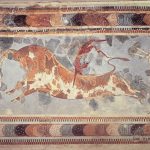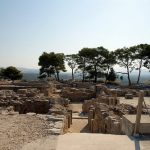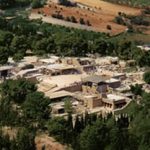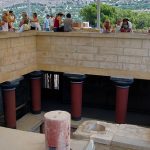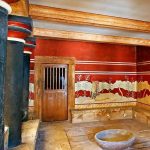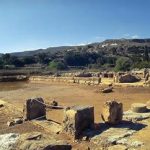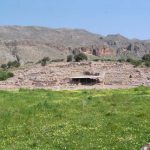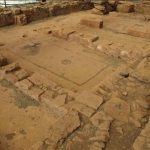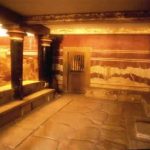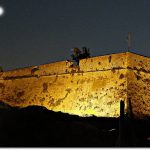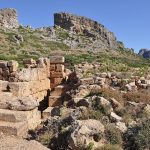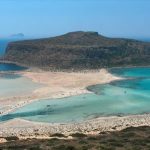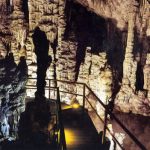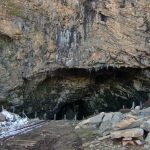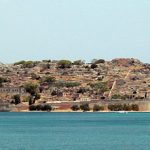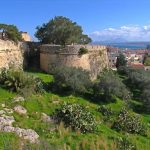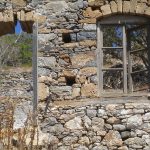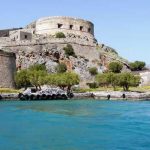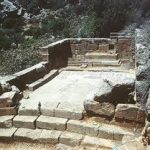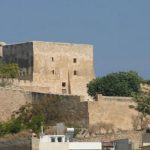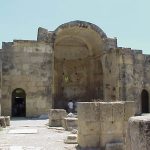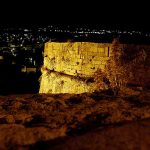
- HOME
- REGION
- FLAVOURS
- NATURE
- CULTURE
- HISTORY
- CRETE IN THE NEOLITHIC PERIOD
- CRETE IN THE MINOAN PERIOD
- FROM THE SUB-MINOAN TO THE HELLENISTIC PERIOD
- THE ROMAN PERIOD
- THE ARAB PERIOD
- EARLY CHRISTIAN AND FIRST BYZANTINE PERIOD
- SECOND BYZANTINE PERIOD (961-1204 A.D.)
- VENETIAN RULE (1211-1669 A.D.)
- THE INDEPENDENCE OF CRETE AND ITS UNION WITH GREECE
- THE WORLD WAR AND OCCUPATION – RECENT PAST AND PRESENT
- MUSICAL TRADITION
- HISTORY
- ACCESS TO HOUDETSI
- Gallery
- ACTIVITIES
- Contact
MYTHOLOGY
The Mythology of Crete
The Cretan mythology, the oldest in Europe provided the bases for its rich Greek mythology. Diodorus Siculus (1st century BC historian) tells us that the home of the gods is Crete. The first Cretans, the Minoans were absolutely tied to nature, and worshiped it as a deity. In an attempt to explain the mysteries of the Mother Goddess (Nature), they created myths, which were later adopted by the Greek tribes who descended on the island: the Mycenaean (15th century BC) and later Dorians (12th BC).
Unfortunately, we cannot have a complete picture of the Cretan myths, but we assured that it was rich. The archaeological findings allow us to conclude that the Cretan myths have been preserved or developed in the Greek mythology.
Every place has its own local traditions, but Crete can boast of ancestry of some of the most important Greek myths. Crete is where the father of the gods Zeus was born, in Crete Zeus mates with Europe, who gave birth to Minos, Crete is the birthplace of Talos, and where Theseus met Ariadne, and from Crete Daedalus and Icarus began their journey.
Minoan Palaces
The most known Minoan palaces are Knossos (22,000 sq.m), Phaistos (18,000 m²), Malia (7,500 sq.m) and Zakros (8,500 sq.m). All Minoan palaces that were excavated are located in eastern Crete. In western Crete there is the Minoan palace of Cydonia in Chania, but has not been excavated and is located in the city center (Kastelli Hill) in a densely populated area.
The Minoan palaces were autonomous and independent, but they seem to follow a common policy, which was dictated by the central, largest and most luxurious palace of Knossos.
- Minoan Palace of Knossos: The Minoan Palace of Knossos is 5 km south-east of Heraklion, in the valley of the river Kairatos. The river originates from Arhanes crossing Knossos and flows into Katsampa, the Minoan harbor of Knossos. In Minoan times the river was flowing throughout the year and the surrounding hills were covered with oaks and cypresses, where today we see olives and vines.
- Minoan Palace of Phaistos: Phaistos, or more correctly the Minoan Palace of Phaistos is located in south-central Crete, Messara Plain, and 55 km south of Heraklion and within walking distance from the archaeological site of Agia Triada the archaeological site Gortyn and Matala. Phaistos is the most important archaeological sites in Crete, and receives thousands of visitors every year. The Minoan palace of Phaistos corresponds to a thriving city, not by chance developed in the fertile plain of Messara in prehistoric times, ie from 6,000 BC about until the first BC century, as attested by the archaeological findings.
- Minoan Palace of Malia: East of the current Minoan palace of Malia. It is the third largest palace of Minoan Crete and is situated in a privileged location, near the sea, on the road connecting the eastern and central Crete. The palace of Malia in mythology served as the residence of Sarpedon, brother of Minos, and was first built in 1900 BC. The settlement and its neighborhoods survive until today, and used to embrace the palace, creating a palace-city. The first palace was destroyed around 1700 BC and rebuilt around 1650 BC, in the same location and with the same basic design of the old. Finally, in 1450 BC it was destroyed and not inhabited again. Only in the period of Mycenaean dominance built among the ruins of a small building that was probably a shrine. Malia have the chance to walk in the actual palace, as revealed by the excavations of archaeologists. The ruins that survive until today belong to the New Palace complex, the second palace, the rooms of which are organized around 3 courtyards, central, northern and the “courtyard of the tower. It is a palace that attracts the interest of visitors, mainly because of its the majestic dimensions, complex design and multiple details.
- Minoan palace at Zakros: Zakros, a small village on the eastern coast of Crete, is known for the Minoan palace of Zakros, one of the “treasures” of Minoan Culture unearthed by archaeologists in the last century in Crete. The palace covers an area of 4.500 square meters in Zakros, and it was the administrative and religious center of a flourishing settlement spanning over an area of 8.000 square meters.
Archaeological Sites
- Gortys or Gortyna: It is one of the most important cities in Crete with an unbroken history of 6,000 years and one of the most extensive archaeological sites in Greece. It lies in south central Crete in the fertile Mesara plain, the site of the first human habitation of Crete at the end of the Neolithic period (5th millennium BC). Gortys is about 40 minutes drive south of Heraklion, on the same road that will take us to Phaistos and Matala. Gortys is about 1 km past the village of Agii Deka, at the side of the main road. According to one tradition, Gortys was named after its founder Gortys, the son of Radamanthys, king of Phaistos and brother of Minos. Another story is that it was founded by Gortys from Tegea in Arcadian Gortynia. A third variation on the same myth has Gortys founded by Queen Gortyna of Crete, mother of King Taurus.
- Zominthos: Zominthos is a major archaeological site, a once-flourishing Minoan settlement (1900-1400 BC) on Mount Psiloritis in Crete. Archaeologist Yannis Sakellarakis has been excavating Zominthos for the past 5 years and, according to him, the dig is set to continue for many more years, bringing to light important finds which will add greatly to our knowledge of the Minoan civilisation.
- Ancient Kommos: The Minoan town of Kommos was the harbour of Phaistos from 1650 to around 1250 BC. In the 19th century, in an outbreak of imagination and romanticism, the Italian archaeologist Taramelli identified Kommos as the place where King Menelaus was shipwrecked on his way home from Troy after the end of the Trojan War, a deadly accident mentioned by Homer. Today part of the ancient town has been excavated. The Kommos archaeological site is not open to the public, but you can see a bit of it from the side of the fenced-off area as you walk down to the beach. You can also see it from above, stopping at the crossroads after Pitsidia before heading down to Kommos beach.
- Spinalonga: It is a small island near Elounda in East Crete. Spinalonga is also known as the Leper Island, as that is where lepers from Crete and the rest of Greece were quarantined until 1957. Today the name Spinalonga is only applied to the islet, but the Venetians used it to include the large peninsula of Nissi or Kolokytha, which is connected to Elounda by a narrow isthmus. Today thousands of tourists visit Spinalonga each summer by boat from Agios Nikolaos, Elounda and Plaka, for a tour of its ruined buildings, which the Archaeological Service is laboriously trying to maintain. The name Spinalonga appeared around the 13th century, bestowed by the Venetian conquerors, who, unfamiliar with Greek, corrupted the place-name “Stin Olounda” (“at Olounda”), originally to Spinalonde (13th century) and later to Spinalonga. It is no coincidence that the small island of Giudecca near Venice was also known as Spinalonga. According to another interpretation the name of the island is derived from its shape, like a long thorn (spina longa), but this theory is not widely held. Much later, in 1957, another name, Kalydon, was proposed for the island, in an unsuccessful attempt to replace the Latinate Spinalonga with a Greek name.
- Fortezza:The Fortezza (in this case pronounced “Fortedza” rather than “Fortetsa”) is the Venetian fortress of Rethymnon, almost in the centre of the old town. The giant Fortezza, with its hidden centuries of history, is visible from every corner of the town and offers panoramic views of Rethymnon and the coast to the west.
- Dikteo Antro, the cave of Zeus:is found on Mt Ida or Psiloritis, the highest mountain in Crete. The Ideon Cave is one of the greatest cave sanctuaries in Crete, as important as the major Greek temples. It flourished in antiquity (4000 BC to the 1st century AD). The Ideon Cave was famous for being the place where Zeus, the Father of the Gods, was born and grew up.
- The Kazarma Fortress in Sitia: The Kazarma Fortress in Sitia stands high above the town and is visible from the beach. It was built by the Venetians in the 13th century as the guard barracks, the Casa di Arma, a name corrupted to Kazarma.
- Lissos: Lissos is an ancient city whose ruins are preserved between Paleochora (west) and Sougia (east), on the south coast of Chania Prefecture. Lissos was a harbour of the Dorian city of Elyros, near the modern-day village of Rodovani. Both Elyros and its two harbours, Sougia and Lissos, flourished in the Hellenistic, Roman and First Byzantine periods, and were destroyed by the Saracen Arabs who arrived in large numbers from Spain. It is said that, at its, peak, Elyros had 30,000 inhabitants. It also minted its own coinage, as did Lissos. The Lissos coin depicted the head of the goddess Artemis on one side and a dolphin on the reverse.
- Falassarna: The ancient city of Falassarna (now more usually spelled Falassarna) was a major trading centre, with its own coins bearing the figure of a woman on one side, and the initials ΦΑ (FA) between the points of a trident, symbolic of the area, on the other. In ancient times Falassarna included the promontory with the hill of the acropolis; above the city harbour.The harbour of Falassarna measured 100 m x 75 m and was the only “closed” harbour in West Crete. The harbour-builders exploited the local lagoon, digging a channel to the sea 50 m long, 10 m wide and 2 m deep. The harbour was particularly secure and the city walls extended along the harbour moles, making it a major naval and trading centre.
